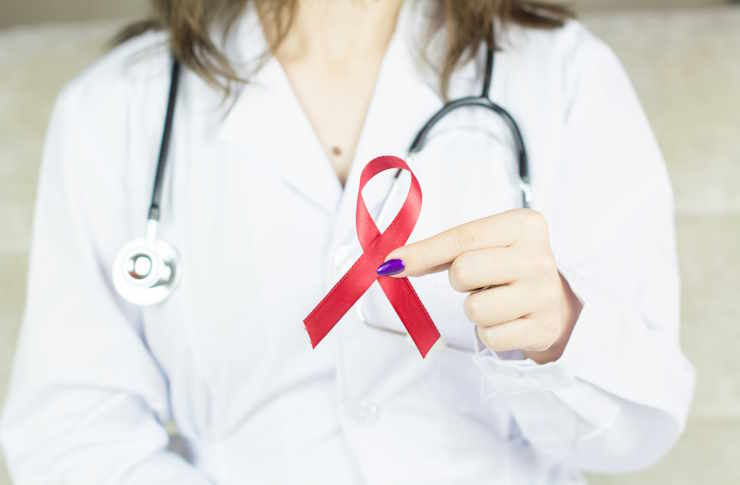Triple Negative Breast Cancer: Key Symptoms and Early Signs
Triple Negative Breast Cancer (TNBC) is an aggressive form of breast cancer that does not respond to common hormone therapies. This article explains the main symptoms and early signs, reviews treatment considerations, and highlights the importance of awareness for women’s health.

Triple negative breast cancer (TNBC) stands apart from other breast cancer types due to its unique characteristics and aggressive nature. Unlike hormone receptor-positive cancers, TNBC cells do not respond to hormone-blocking treatments, making recognition of early symptoms particularly important for timely medical intervention.
Common Signs and Physical Symptoms of TNBC
The physical manifestations of triple negative breast cancer often mirror those of other breast cancer types, but may progress more rapidly. A new lump or mass in the breast tissue represents the most frequent initial symptom, typically feeling firm or hard to the touch. Changes in breast size or shape, particularly when occurring in only one breast, warrant immediate medical attention.
Skin changes over the breast area can signal underlying cancer development. These may include dimpling, puckering, or an orange-peel texture known as peau d’orange. Nipple discharge, especially when bloody or occurring without squeezing, requires prompt evaluation. Additionally, nipple inversion or retraction that develops suddenly differs from congenital variations and needs assessment.
Early Indicators That May Signal TNBC
Beyond obvious breast changes, several subtle indicators may suggest triple negative breast cancer development. Persistent breast pain or tenderness, while less common than painless lumps, can accompany TNBC in some cases. Swelling in the lymph nodes under the arm, above the collarbone, or around the collarbone area often indicates cancer spread.
Unexplained fatigue, particularly when combined with other symptoms, may reflect the body’s response to cancer growth. Some individuals experience localized warmth or redness in breast tissue without signs of infection. These early warning signs, while potentially indicating various conditions, deserve medical evaluation when persistent or progressive.
Understanding Risk Factors and Prevention
Certain factors increase triple negative breast cancer risk, though having risk factors does not guarantee cancer development. Age plays a significant role, with TNBC more commonly affecting younger women compared to other breast cancer types. Women under 40 face higher relative risk for this aggressive form.
Genetic mutations, particularly BRCA1 and BRCA2, substantially elevate TNBC risk. African American and Hispanic women show higher incidence rates compared to other ethnic groups. Family history of breast or ovarian cancer, especially at young ages, increases susceptibility.
While prevention strategies cannot eliminate risk entirely, maintaining healthy lifestyle habits may help. Regular exercise, limiting alcohol consumption, maintaining healthy weight, and breastfeeding when possible may provide protective benefits. However, many TNBC cases occur without identifiable risk factors.
Diagnostic Procedures and Testing
Accurate TNBC diagnosis requires comprehensive testing beyond initial physical examination. Imaging studies typically begin with diagnostic mammography, followed by breast ultrasound to evaluate suspicious areas more thoroughly. Magnetic resonance imaging (MRI) may provide additional detail for complex cases.
Tissue biopsy remains the definitive diagnostic method for confirming cancer presence and determining specific type. Core needle biopsy allows pathologists to examine tissue samples and perform receptor testing. The triple negative designation comes from laboratory analysis showing absence of estrogen receptors, progesterone receptors, and HER2 protein overexpression.
Additional testing may include genetic counseling and BRCA mutation analysis, particularly for younger patients or those with family history. Staging procedures help determine cancer extent and guide treatment planning.
Treatment Options and Approaches
Triple negative breast cancer treatment typically involves multimodal approaches combining surgery, chemotherapy, and radiation therapy. The absence of hormone receptors means targeted hormone therapies prove ineffective, making chemotherapy a cornerstone of treatment.
Neoadjuvant chemotherapy, administered before surgery, can shrink tumors and make surgical removal more feasible. Common regimens include combinations of anthracyclines, taxanes, and platinum-based agents. Recent advances have introduced immunotherapy options for certain TNBC cases, particularly those with specific genetic markers.
Surgical options range from lumpectomy with radiation to mastectomy, depending on tumor size, location, and patient preferences. Radiation therapy typically follows breast-conserving surgery and may be recommended after mastectomy in high-risk cases.
| Treatment Type | Estimated Cost Range | Provider Examples |
|---|---|---|
| Chemotherapy (full course) | $10,000 - $30,000 | MD Anderson, Mayo Clinic, Memorial Sloan Kettering |
| Surgery (lumpectomy) | $15,000 - $25,000 | Johns Hopkins, Cleveland Clinic, Cedars-Sinai |
| Radiation therapy | $8,000 - $18,000 | Dana-Farber, Fred Hutchinson, Moffitt Cancer Center |
| Immunotherapy (annual) | $100,000 - $200,000 | Stanford Cancer Center, UCSF Helen Diller |
Prices, rates, or cost estimates mentioned in this article are based on the latest available information but may change over time. Independent research is advised before making financial decisions.
Triple negative breast cancer presents unique challenges requiring prompt recognition and aggressive treatment approaches. Understanding the symptoms, risk factors, and available diagnostic tools empowers individuals to seek timely medical care. While TNBC represents a more aggressive cancer type, advances in treatment options continue improving outcomes for patients facing this diagnosis. Regular screening, awareness of warning signs, and maintaining open communication with healthcare providers remain essential components of breast health management.
This article is for informational purposes only and should not be considered medical advice. Please consult a qualified healthcare professional for personalized guidance and treatment.




